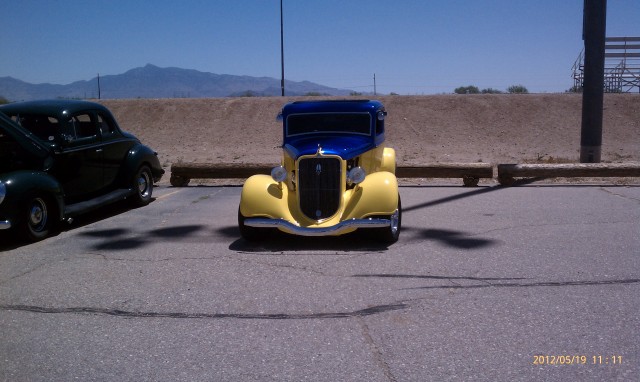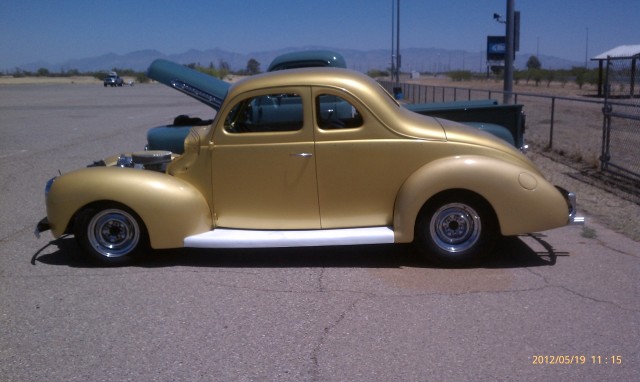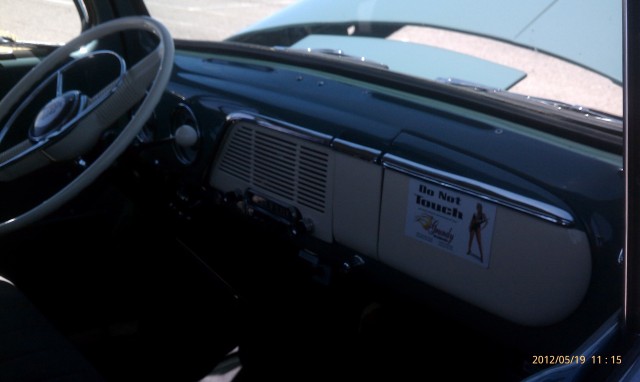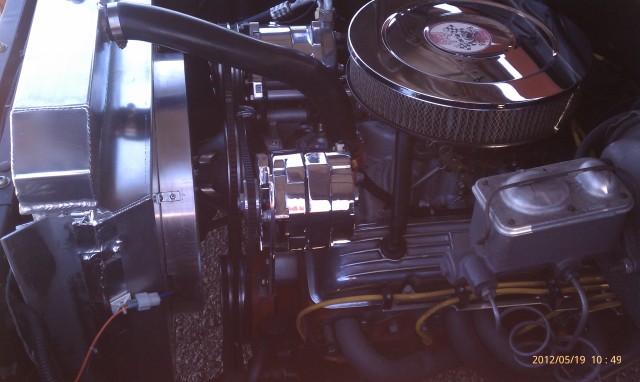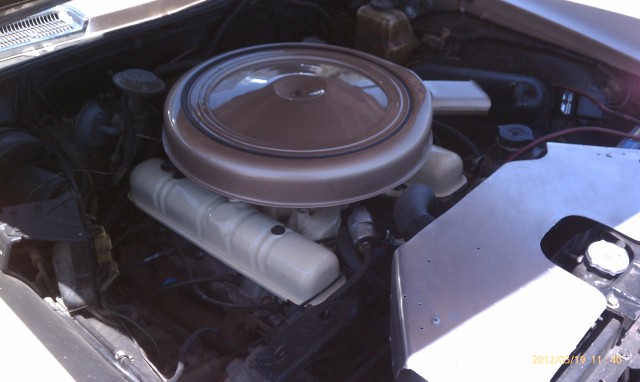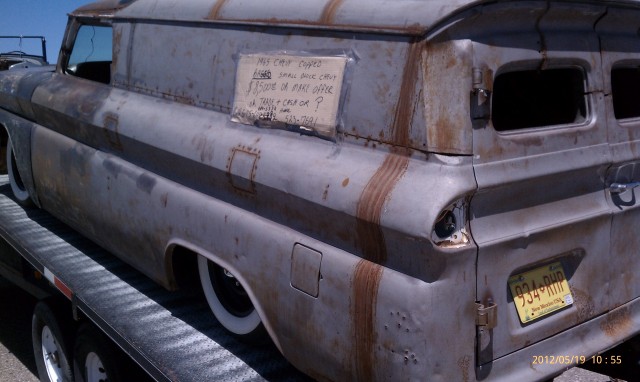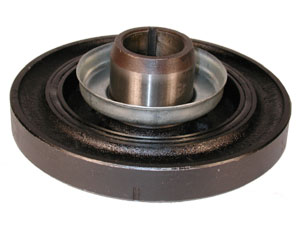I love this Impala and I don’t care that it has 4 ways to get in!!!!!!
By Angelo Van Bogart
Chevrolet built 497,048 four-door sedans in 1960. No one knows how many of those sedans were Impalas, Bel Airs or Biscaynes, but you can bet the farm that many went to rural America.
Determining how many 1960 Chevy sedans went to farmers is likewise impossible, but John Broucker isn’t concerned about that figure. What he’d really like to know is how many of those 1960 Impala sedans were equipped with a 348-cid V-8 and a four-speed manual transmission like his central Ohio sleeper ordered new by a farmer?
“I called General Motors and all they could tell me was how many were four-door sedans,” he said.
Chevrolet was not particular about the details of its production in this era, but Broucker’s car is certainly rare. Maybe even as rare as hen’s teeth. Broucker himself had a hard time believing the car’s combination when he first heard about the four-speed Impala sedan in 1980.
“The farmer that bought it new, I worked with his sister’s son, his nephew, and he said, ‘My uncle has a 348 four-speed,’ and when I [saw it], I said, ‘That’s a four-door.’ My buddy said it can’t be, it just can’t be, so I called the guy and I bought it.”
Even after buying the car from the original owner, and running into a mechanic who watched the car get unloaded at Progressive Chevrolet in 1960, Broucker sometimes has to defend what some people assume is a clone.
“Honestly, if I was going to clone a car, I wouldn’t clone a four-door ’60 Chevy,” he said.
That still begs the question: Why does a four-door 1960 Chevrolet Impala four-door sedan with a 250-hp Turbo-Thrust 348 and a four-speed with Posi-Traction even exist?
“Back then, if your buddy drove up to you in a four-door four-speed, you’d say, ‘You’re crazy,’” Broucker admits. “But he said he didn’t like the Impala (hardtop), it had the big back window, and he wanted a ‘fooler.’”
For the full fooler (a.k.a. “sleeper”) effect, the original owner even ran little hubcaps and blackwall tires to help the finned Impala fly under the radar. Aside from its performance options, the Impala is otherwise a typical farm sedan and generally lacks creature comforts.
“It doesn’t even have the rear-view mirror on the outside,” Broucker said. “It does have an AM radio, a heater, and the only thing that doesn’t work is the clock in the dash.”
With only 56,000 miles on the odometer, the rest of the Impala works as new, and Broucker said it remains largely original.
“It still has the original clutch,” he said. “I put front brakes and maybe a fan belt on and that’s about it. It has the original paint, original interior and original chrome. Sometimes, people look at the bumpers and say they’re a little wavy, but that’s they way it was. It even has the original generator, and the right rear tailpipe has a couple holes, but it’s the original exhaust.
“Behind all of the six tail lights, they have those little plastic cups on them. These are still on there. Any time anyone changed a light they threw them away.”
The unrestored Impala shows so well, it’s even placed second at the Stan Hywet car show in Akron, Ohio, against restored cars. Broucker believes the car’s excellent level of preservation is partly due to how the original owner stored the car.
“This farmer also worked at the railroad, and [he and his brothers] brought cabooses home and they made garages out of them,” he said. “I bet the thing was 3 feet off the ground and the wood floor helped preserve the car.”
When Broucker first saw the Impala, it was wedged in one of those cabooses.
“It was a real tight fit,” he said. “There was a pot belly stove in the caboose and I don’t know if he used the stove or not. They say the wood doesn’t sweat, it absorbs the moisture.”
The storage served the Impala well through 20 years and 50,000 miles with the original owner. Today, Broucker remains thrilled with the Impala’s condition. However, he hasn’t always found the car thrilling, which is why he’s only added about 6,000 miles to the odometer in his 32 years of ownership.
“Back then, I bought and sold a lot of cars, and for some reason I just held on to this,” he said. “I did think it was neat at first — I just thought it couldn’t be real, but it was. Honestly, I think I kind of lost interest and wondered, ‘Why did I buy a four-door?’ Then I would take it out and drive it and think, ‘This drives pretty nice.’ I was really happy with that.”
Many vehicles have come and gone from Broucker’s collection, but the Impala has been a mainstay. In fact, Broucker has pared his collection down to a 1969 Dodge Dart he races in the 1/8 mile and this oddly optioned Impala. That raises the question, would he ever race his Impala?
“I have [thought about it], but I might be embarrassed by it,” he said. “It has a lot of torque, but the point I am at, I don’t want to tear up the clutch.”
Instead, Broucker is content to blend into the car show landscape, making his Impala blend into the sea of hobby cars. For those collectors who enjoy the unusual, stumbling onto this rarity is like finding treasure. Maybe as exciting as finding that needle in the haystack.
From http://www.oldcarsweekly.com






 by
by 






